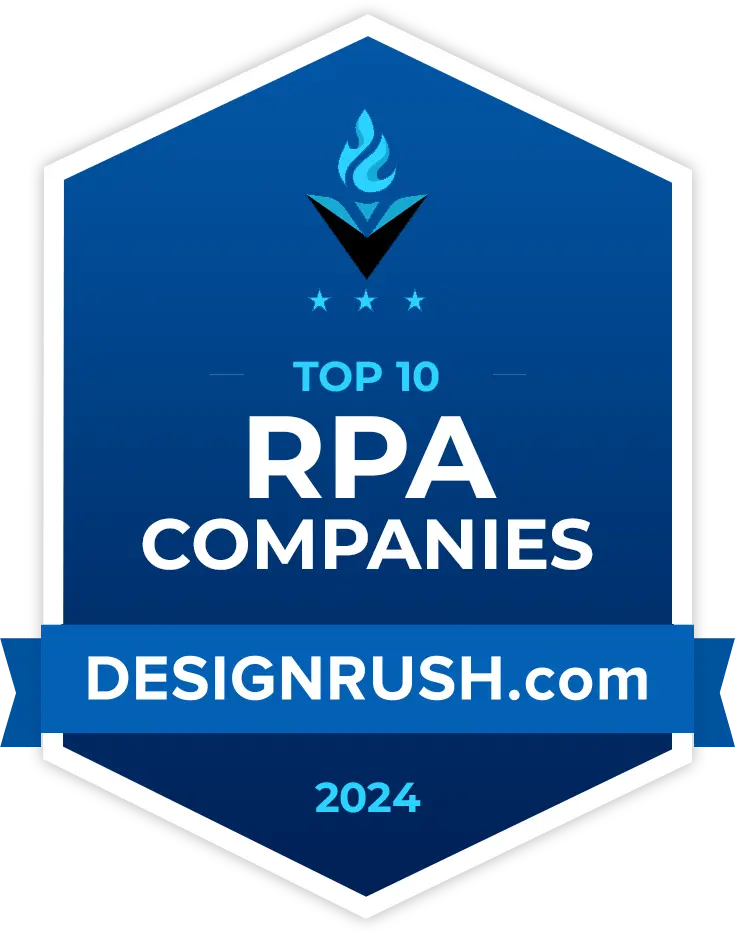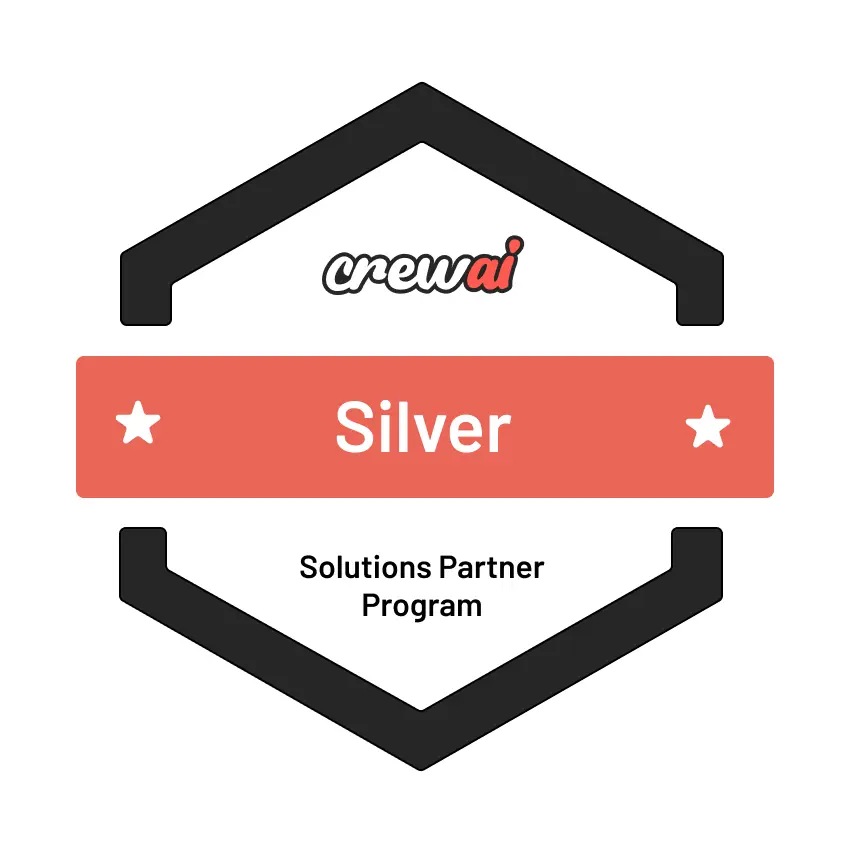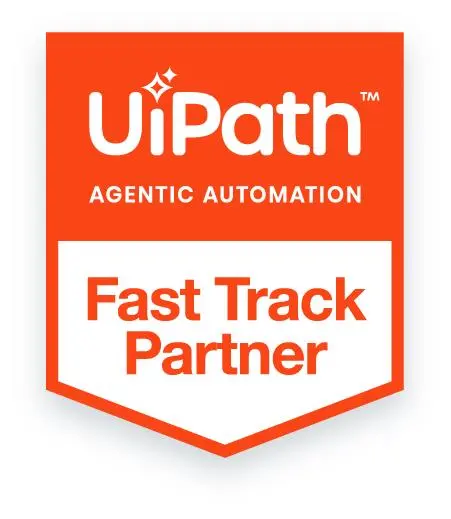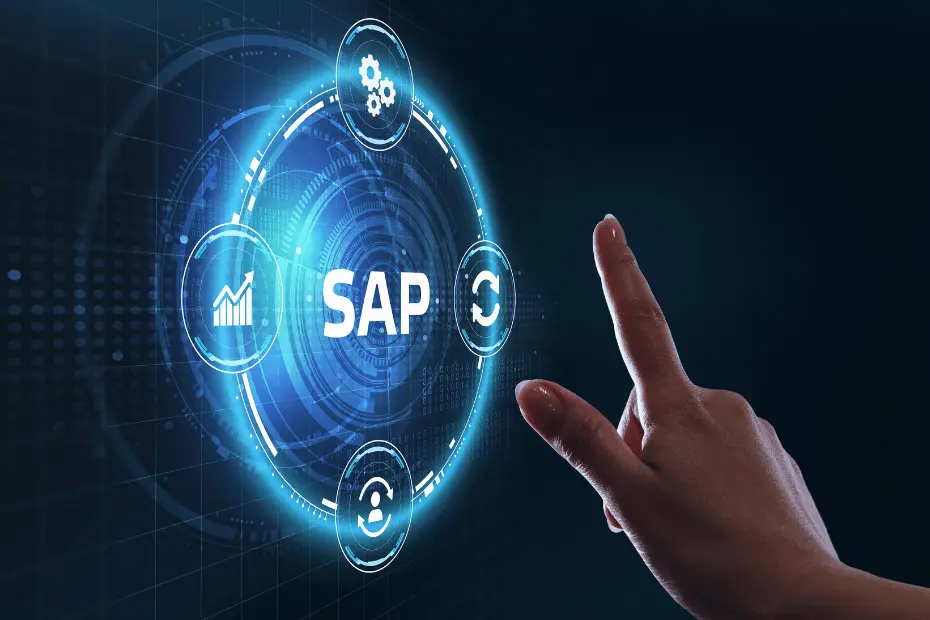
Key Takeaways
- The combination of AI’s predictive intelligence with SAP’s operational control leads to smarter planning, faster decision-making, and real-time execution.
- Manual planning, siloed systems, and static schedules cannot handle today’s dynamic supply chains, leading to inefficiencies, higher costs, and lost opportunities.
- From predicting demand to adjusting production schedules on the fly, AI transforms static planning into a dynamic, responsive system.
- With robust data management, process orchestration, and pre-built integrations, SAP acts as the critical backbone that powers AI-driven decisions.
- Overcoming integration complexity, data issues, and internal resistance is key. Organizations must invest in talent, training, and technology to realize the full benefits.
The global manufacturing space is a whirlwind of accelerating change. From unpredictable supply chain disruptions to fluctuating consumer demands and intense competition, businesses are constantly battling for an edge. In this high-stakes environment, the traditional methods of production planning are rapidly becoming obsolete. Manual processes, siloed data, and reactive decision-making simply can’t keep pace. This is where the powerful synergy of Artificial Intelligence (AI) and SAP integration steps in, ushering in a new era of intelligent manufacturing.
By combining AI’s analytical prowess with SAP’s robust operational backbone, manufacturers can unlock unprecedented levels of efficiency, responsiveness, and profitability. In this comprehensive guide, we’ll delve deep into how AI-powered automation, seamlessly integrated with SAP, is set to revolutionize production planning, optimize efficiency, and deliver unparalleled business value.
Also read: Automating SAP Ariba Procurement Workflows Using RPA
The Pain Points of Traditional Production Planning
Before we delve into the solutions, let’s acknowledge the deeply ingrained challenges that plague conventional production planning. For decades, manufacturers have struggled with issues that erode efficiency and increase costs.
Decisions are often based on outdated information. Manual data entry and disparate systems result in shop floor, inventory, and sales data that aren’t synchronized in real-time. This leads to production schedules based on assumptions rather than current reality.
Without precise insights, machines might be underutilized while others are overloaded. Labor might be misallocated, and critical materials could be sitting idle or, worse, completely absent when needed. This leads to bottlenecks and missed production targets.
Poor Demand Forecasting:
Guesswork often underpins demand predictions. Inaccurate forecasts result in either costly excess inventory tying up capital or stockouts that lead to lost sales and customer dissatisfaction.
Inflexibility and Slow Response:
The pace of change in modern markets is relentless. Traditional planning systems are rigid and slow to adapt to sudden changes in demand, supply chain disruptions, or unexpected equipment failures. Reacting quickly becomes a monumental task.
These inefficiencies translate directly to the bottom line. Think about the expenses from waste, rework, expedited shipping fees to compensate for delays, and the significant carrying costs of bloated inventories.
Human Error and Inconsistency:
Manual processes, no matter how meticulously performed, are prone to human error. A single typo or miscalculation can ripple through the entire production schedule, causing significant delays and costs.
Limited Collaboration:
Often, departments operate in silos. Production, sales, procurement, and logistics might use different tools or rely on fragmented data, leading to miscommunication and suboptimal collective decision-making.
These challenges paint a clear picture: the old ways are simply unsustainable for manufacturers aiming for leadership in the Industry 4.0 era.
AI: The Brain Behind Smart Production Planning
If traditional methods are the problem, then Artificial Intelligence is undoubtedly a major part of the solution. But what exactly is AI in the context of production planning, and how does it function as the ‘brain’ of intelligent manufacturing?
At its core, AI for production planning leverages advanced algorithms, Machine Learning (ML), Deep Learning (DL), and Predictive Analytics to process and interpret vast amounts of data. This data isn’t just internal historical records; it includes real-time shop floor data, external market trends, weather patterns, geopolitical events, and even social media sentiment—anything that could influence production.
Key Applications of AI in Production Planning
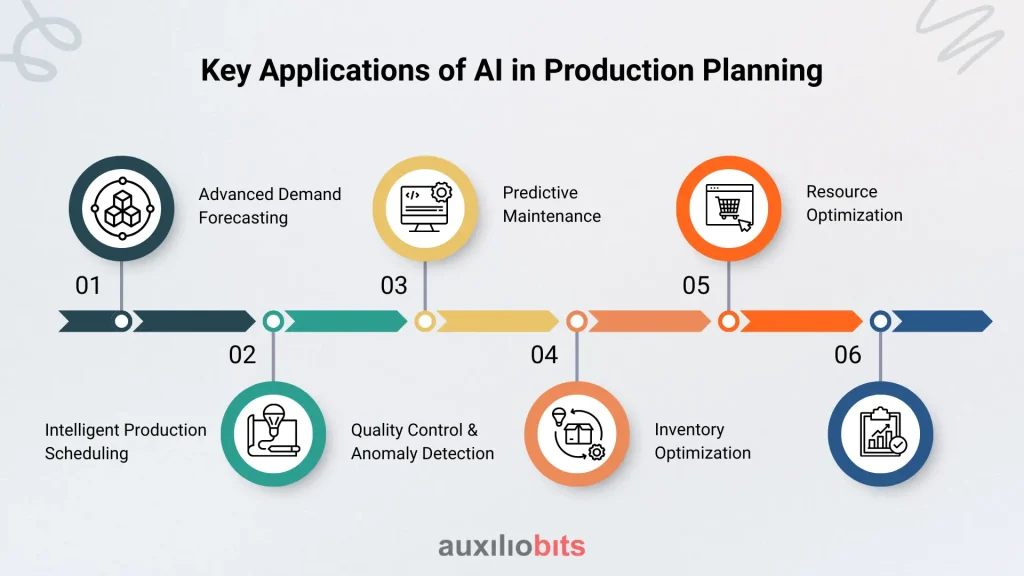
Unlike statistical models that look at past sales, AI models can analyze a myriad of influencing factors. They can identify complex patterns in historical sales data, market trends, promotional activities, competitor actions, economic indicators, and even weather forecasts to predict future demand with unprecedented accuracy. This means fewer stockouts and significantly reduced excess inventory.
Intelligent Production Scheduling:
This is where AI truly shines. Traditional scheduling is often a complex, manual puzzle. AI, however, can optimize production schedules in real-time, considering an exhaustive list of constraints simultaneously: machine availability, labor skill sets, material lead times, tool wear, maintenance schedules, energy costs, and specific customer priorities. It can dynamically adjust schedules on the fly if an unforeseen event occurs, minimizing disruption.
Predictive Maintenance:
AI-powered sensors on machinery collect data on vibrations, temperature, pressure, and sound. Machine learning algorithms analyze this data to predict when a piece of equipment is likely to fail. This allows for proactive maintenance, minimizing unplanned downtime, extending asset lifespan, and preventing costly production halts.
Quality Control & Anomaly Detection:
AI-powered computer vision systems can inspect products on the assembly line with far greater speed and accuracy than the human eye. They can identify microscopic defects, ensure consistent quality, and even flag anomalies that might indicate a problem in the production process itself, leading to immediate corrective actions.
AI continuously monitors inventory levels across the entire supply chain, factoring in demand forecasts, lead times, production capacities, and carrying costs. It can dynamically adjust reorder points and quantities, ensuring materials are available precisely when needed, minimizing both holding costs and the risk of shortages.
Beyond just machines, AI can optimize the allocation of human labor, energy, and raw materials. It can suggest optimal staffing levels, identify energy-saving production sequences, and minimize material waste by calculating the most efficient cutting patterns or batch sizes.
The Powerhouse: SAP as the Integrated Backbone
While AI provides the intelligence, it needs a robust, reliable platform to operate from – a comprehensive system that manages the vast operational data of a manufacturing enterprise. This is where SAP comes in as the indispensable backbone.
SAP has long been a global leader in Enterprise Resource Planning (ERP) solutions, particularly for the manufacturing sector. Its strength lies in providing a centralized data repository and a comprehensive suite of integrated modules that manage everything from finance and human resources to sales, procurement, and, crucially, manufacturing operations. Solutions like SAP S/4HANA Manufacturing, SAP Integrated Business Planning (IBP), and SAP Digital Manufacturing are designed to orchestrate complex industrial processes.
How SAP Facilitates AI Integration:
AI models are only as good as the data they’re fed. SAP’s core strength is its ability to manage massive volumes of structured data from across an organization. This provides the clean, consistent, and reliable datasets that AI algorithms need to learn from and make accurate predictions. It acts as the single source of truth for master data, transactional data, and operational data.
AI generates insights and optimal plans, but SAP is the system that translates these into actionable commands. It takes the AI-recommended production schedule, creates corresponding production orders, allocates resources within the ERP system, and triggers the necessary actions on the shop floor. SAP ensures that the AI’s “brain” is seamlessly connected to the operational “body” of the business.
Real-time Data Exchange:
Modern SAP systems are built for real-time data processing. This is critical for AI, which thrives on up-to-the-minute information from sensors, machines, and operational systems. The seamless flow of data between the shop floor (via IoT), the supply chain, sales, and the AI systems ensures that plans are always based on the most current conditions.
Recognizing the need for extensibility, SAP often provides pre-built connectors, APIs (Application Programming Interfaces), and integration frameworks (like SAP Cloud Platform Integration Suite) that make it easier to connect SAP with various AI/ML platforms, third-party analytics tools, and even custom AI models.
SAP itself is increasingly embedding AI capabilities directly into its core products. Initiatives like SAP Business AI and AI features within S/4HANA for manufacturing are designed to bring predictive insights and automation closer to the core business processes, reducing the need for complex external integrations for some functionalities.
Synergistic Benefits: AI and SAP Working Together
The true magic happens when AI and SAP are integrated seamlessly. This isn’t just about adding AI capabilities to an existing ERP; it’s about creating a holistic, intelligent ecosystem that drives manufacturing into the future. The combined benefits are transformative:
Enhanced Decision-Making:
With AI providing predictive insights and SAP offering a unified view of all operational data, decisions move from reactive to proactive and from intuitive to data-driven. Planners can make optimal choices regarding production volumes, resource allocation, and risk management with unprecedented confidence.
AI-driven scheduling minimizes idle time, reduces bottlenecks, and optimizes throughput. SAP then executes these optimized plans flawlessly, leading to faster cycle times, higher output, and smoother operations across the entire production line.
This is a direct consequence of improved efficiency.
- Reduced Waste: Precise planning minimizes material spoilage and rework.
- Optimized Inventory: Accurate demand forecasting and dynamic inventory management slash carrying costs and eliminate stockouts.
- Minimized Downtime: Predictive maintenance prevents costly, unplanned equipment failures.
- Efficient Resource Utilization: Maximizing the output from existing machines, labor, and energy sources directly lowers per-unit production costs.
Improved Agility and Responsiveness:
In today’s volatile markets, the ability to pivot quickly is paramount. AI-SAP integration allows for rapid replanning in response to sudden shifts in demand, supply chain disruptions (e.g., a raw material shortage), or unforeseen events. The system can instantly simulate scenarios and suggest optimal adjustments.
AI’s ability to detect anomalies and predict potential issues in real-time, coupled with SAP’s process enforcement, leads to fewer defects, more consistent product quality, and reduced returns.
This goes beyond simple allocation. AI can continuously learn and adapt, finding ever more efficient ways to utilize every asset, whether it’s a high-tech robotic arm, a skilled technician, or a cubic meter of raw material.
By optimizing energy consumption, reducing material waste, and streamlining logistics, AI-powered production planning integrated with SAP can significantly contribute to a company’s sustainability goals and reduce its environmental footprint.
Competitive Advantage:
Ultimately, businesses that embrace this integration will operate with greater speed, lower costs, higher quality, and superior customer satisfaction, leaving competitors struggling to keep up. It’s about building a future-proof manufacturing operation.
Implementation Challenges and How to Overcome Them
While the benefits are compelling, integrating AI with SAP for production planning isn’t without its hurdles. Successfully navigating these challenges is key to realizing the full potential of this transformation.
This is perhaps the most critical challenge. AI thrives on high-quality, consistent, and comprehensive data. Many organizations struggle with fragmented data across legacy systems, data silos, and inconsistent data formats.
Solution: Implement robust data governance strategies. Invest in data cleansing tools, establish clear data standards, and prioritize building a unified data infrastructure within SAP. It’s often a “garbage in, garbage out” scenario; clean data is non-negotiable.
Connecting existing SAP landscapes, which might be highly customized, with new AI platforms (whether cloud-based or on-premise) can be technically complex.
Solution: Adopt a phased integration approach. Leverage standard SAP APIs and integration suites (like SAP Integration Suite). Consider working with experienced SAP integration partners who specialize in AI and IoT connectivity.
Talent Gap:
There’s a significant shortage of professionals skilled in both AI/data science and SAP. Bridging this gap internally can be challenging.
Solution: Invest in upskilling your existing workforce through training programs in data analytics, AI fundamentals, and SAP’s latest technologies. Strategically hire data scientists, machine learning engineers, and SAP consultants with integration expertise. Partnerships with specialized firms can also fill the void.
Change Management:
Introducing AI and automating critical planning functions represents a significant shift in how people work. Resistance from employees accustomed to manual processes is common.
Solution: Communicate the benefits clearly and early. Involve key stakeholders from the planning, operations, and IT departments in the design and implementation phases. Provide comprehensive training and demonstrate the tangible ROI to build buy-in and alleviate fears. Emphasize that AI is a tool to augment human capabilities, not replace them.
Scalability and Performance:
As data volumes grow and AI models become more complex, ensuring the integrated solution can scale efficiently and perform reliably is crucial.
Solution: Design for scalability from the outset. Opt for cloud-based solutions for both SAP (e.g., S/4HANA Cloud) and AI platforms, which offer elastic scalability. Implement modular AI architectures that can be updated and expanded without disrupting the entire system.
Addressing these challenges proactively through strategic planning, investment in technology and talent, and a strong focus on change management will pave the way for a successful digital transformation.
Real-World Impact & Illustrative Examples
While specific company names can be sensitive in public blogs, the impact of AI and SAP integration in manufacturing is evident across various industries. Consider these illustrative examples that highlight the real-world benefits:
- Automotive Parts Manufacturer: Faced with fluctuating demand and complex assembly lines, this company integrated AI-powered predictive analytics with its SAP S/4HANA system. The AI analyzed sensor data from machinery, historical maintenance records, and production schedules. Result? They achieved a 30% reduction in unplanned downtime through predictive maintenance and improved overall equipment effectiveness (OEE) by 15%, leading to significant cost savings and faster delivery times.
- Consumer Goods Company: Struggling with excess inventory and occasional stockouts due to volatile consumer preferences, this company deployed an AI-driven demand forecasting solution integrated with SAP IBP. The AI leveraged external data like social media trends and local events alongside sales history. This led to a 20% improvement in forecast accuracy, allowing them to optimize inventory levels, reduce carrying costs, and improve product availability on shelves.
- Heavy Machinery Producer: Managing complex, made-to-order production processes, this producer utilized AI for intelligent scheduling within their SAP ERP environment. The AI dynamically optimized production sequences based on material availability, labor skills, and customer delivery dates, even when unexpected component delays occurred. This resulted in a 10% decrease in lead times and a noticeable improvement in on-time delivery rates, boosting customer satisfaction.
These scenarios demonstrate that the combination of AI’s intelligence and SAP’s operational strength delivers tangible, measurable improvements across critical manufacturing KPIs.
The Future is Intelligent: What’s Next?
The journey of automating production planning with AI and SAP integration is just beginning. The capabilities we see today are merely a precursor to what’s possible.
Looking ahead, we can expect:
- Hyper-automation and Autonomous Planning: AI will move beyond just providing recommendations to autonomously executing routine planning adjustments. Complex Reinforcement Learning models could optimize entire production flows in real-time without human intervention for certain scenarios.
- Deeper Integration with Digital Twins: The fusion of AI with Digital Twin technology will create highly accurate virtual replicas of manufacturing facilities. This will enable hyper-realistic simulations of production scenarios, allowing for extensive testing and optimization of plans before they are implemented physically, minimizing risks and maximizing efficiency.
- End-to-End Supply Chain Optimization: AI won’t be confined to just production planning but will optimize the entire supply chain, from raw material procurement and logistics to final product delivery, creating a fully synchronized, self-optimizing network driven by integrated SAP and AI platforms.
- Generative AI for Scenario Planning: Imagine AI generating multiple optimal production scenarios based on various inputs and constraints, allowing human planners to choose the best one. This could drastically speed up strategic planning processes.
- Closer Human-AI Collaboration: The future isn’t about replacing humans but augmenting their capabilities. AI will handle the complex data crunching and optimization, freeing human planners to focus on strategic decision-making, innovation, and handling exceptions.
Conclusion
The manufacturing industry stands at a pivotal point. The pressures of global competition, volatile markets, and the demand for personalized products necessitate a radical shift from traditional, reactive planning to proactive, intelligent automation. Automating production planning with AI and SAP integration is no longer a futuristic concept; it’s a strategic imperative for businesses aiming for sustained growth and resilience.
By leveraging AI’s analytical power to forecast, optimize, and predict, and by rooting these insights within SAP’s robust, integrated operational framework, manufacturers can achieve unprecedented levels of efficiency, cost reduction, agility, and quality. The challenges of data quality, integration, and change management are real, but they are surmountable with careful planning, strategic investment, and a forward-thinking approach.
The time to embrace this revolution is now. Companies that lead this charge will not only survive but thrive, setting new benchmarks for productivity and innovation in the intelligent manufacturing era. Is your organization ready to build the factory of the future today?






